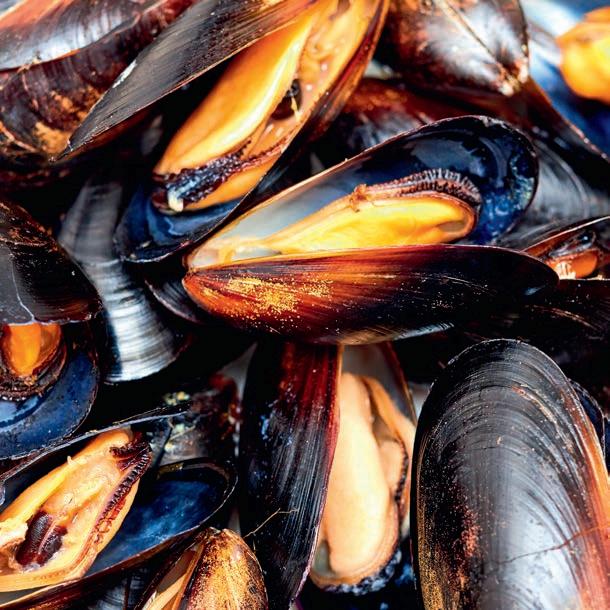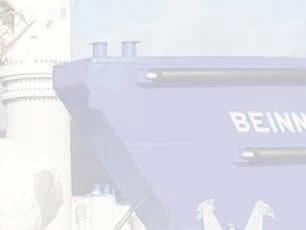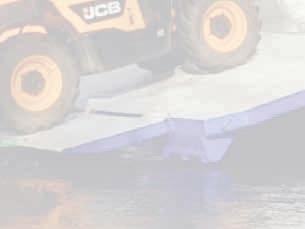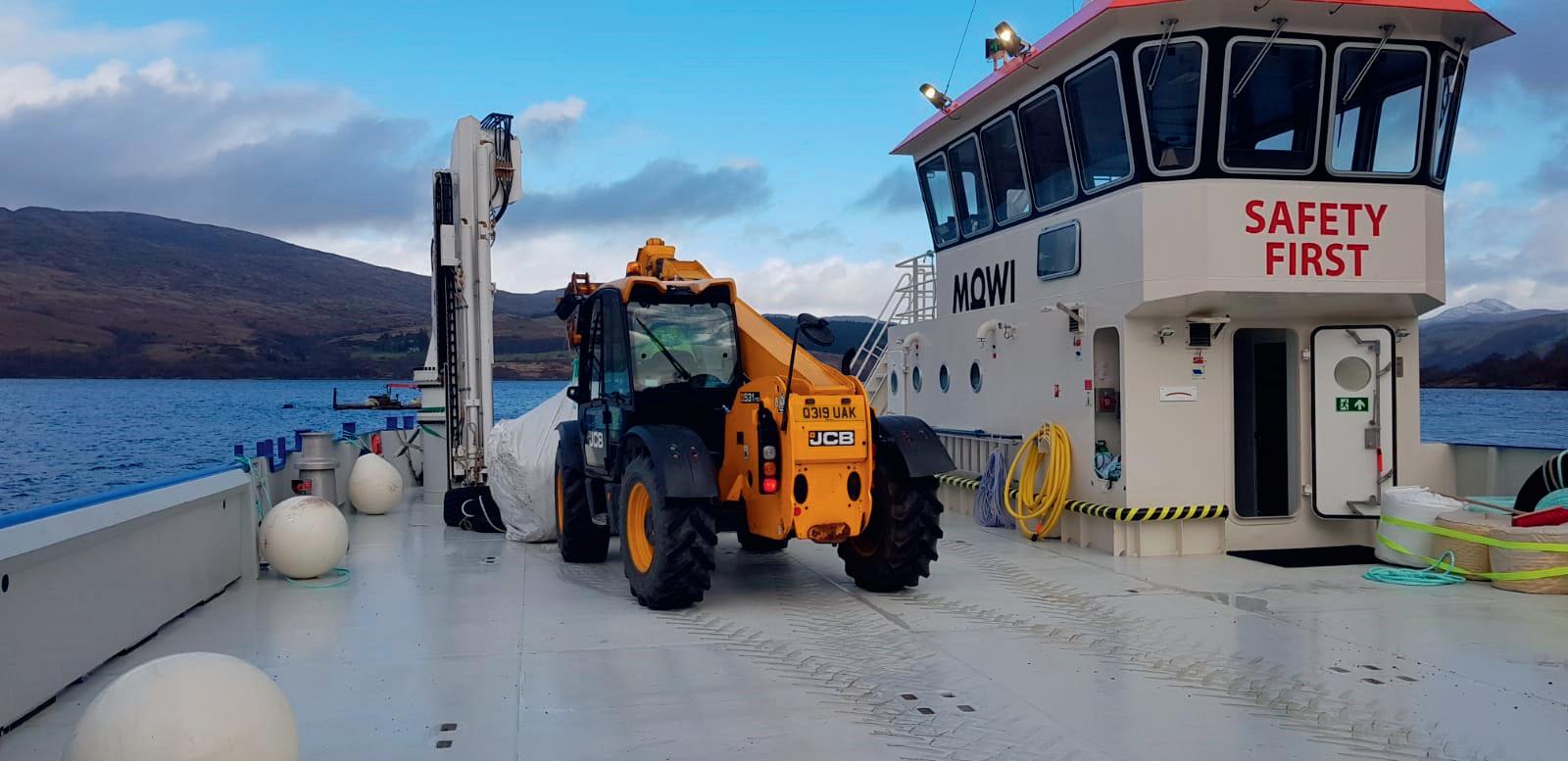
10 minute read
Sustainability
Future perfect
Dawn Purchase of the MCS has set out key challenges for aquaculture
BY VINCE MCDONAGH
The Scottish salmon farming industry is making continuous improvements to reduce its impact on the environment, but challenges remain, according to Dawn Purchase, Aquaculture Programme Manager at the Marine Conservation Society.
In a special paper for the Open Access Government website, she tells her audience that Scotland last year produced just under 214,000 tonnes of salmon, the highest figure so far.
Open Access Government is a digital publication that provides an indepth perspective on key public policy areas from all around the world, including health and social care, research and innovation, technology, blockchain innovation, government, environment and energy.
Open Access Government regularly features a wide range of prestige contributors including government ministers and European Commissioners.
Purchase, who has been with the MCS since 2003, and has since developed the MCS’ own aquaculture programme which covers all aspects of fish farming.
Aquaculture, she says, has been around for 2,000 years, but today accounts for half of all seafood eaten around the world.
Above: Dawn Purchase Above right: Shellfish are perhaps the most sustainable form of aquaculture ture was another key concern, and one of global significance. Her paper continues: “Many of the farmed fish we eat in the UK is imported, including firm favourites such as warm water prawns, bass, bream and pangasius. “These, as well as salmon, rely on commercial feed, utilising a range of ingredients, including wild fish such as anchovy, sprat, blue whiting, as well as vegetable proteins and oils such as soya and rapeseed oil. “These ‘feed fisheries’ are amongst the largest fisheries in the world, but these species play incredibly important roles in the marine ecosystem, therefore, need to be well managed so as not to impact dependant species such as seabirds, and some can certainly be better managed to achieve this. “There is also increasing concern about the environmental impacts of the terrestrial ingredients used, such as soya.” Perhaps the biggest global challenge is the growth in the human popu-
And in the UK it remains the fastest growing lation, predicted to reach 9.5 billion by 2050. food sector with an average annual increase in Purchase says: “According to the Food and Agriculture Organisation of production of 5.3% a per year between 2001- the United Nations (FAO), 33% of the world’s farmland is moderately 2018. Globally in 2018, 114.5 million tonnes of to highly degraded, which, in turn, impedes food security, particularly as aquaculture products, including aquatic animals, much of the remaining land is unsuitable for agriculture. algae and ornamental seashells and pearls, with “Given these constraints on agriculture to fulfil our current and future a farm gate value of US$263.6bn were food needs, we need to look to the oceans to provide us with the produced. protein we need.
Atlantic salmon dominates the UK sector, “Global per capita seafood consumption has been steadily rising from followed by rainbow trout, halibut and shellfish 9.0kg in 1961 to 20.3kg in 2017, with wild capture fisheries at their maxsuch as mussels, oysters, clams and scallops. imum capacity, aquaculture, particularly in the sea, offers the potential to
Purchase writes: “The Scottish salmon farming fulfil the protein needs of a growing population. sector has been making continuous improve- “However, to enable this potential to be fulfilled it is increasingly clear ments to become more efficient and reduce its that it needs to happen in a low carbon, climate-resilient and ecologically impact on the environment. sustainable way.”
“Changes in feed formulations have reduced There are a number of climate-driven challenges that needed to be the reliance on wild capture ingredients, anti- overcome for people to realise the potential of aquaculture, predomibiotic usage has been largely replaced with the nantly ocean acidification, warming waters and increasing storm events, use of vaccines and technical innovations with Purchase suggests. equipment allow for constant feed monitoring, “We need to look for species that can deal with the changing climate reducing waste and benthic impacts. whilst still providing us with the food we need, with the lowest possible
“Despite this progress, there remain a number environmental footprint. Shellfish are a great example. of environmental concerns, as the industry con- “As filter feeders, they don’t require commercial feed and remove tinues to grow – and is not showing any signs of nutrients from the surrounding water, but with a calcium carbonate slowing down – it is important these issues be shell, they also provide a carbon sink. Seaweed farming is also another addressed before the industry expands further.” emerging opportunity for ‘green’ aquaculture. It requires minimum input,
She continues: “The chemicals used to treat can store carbon, and dampens wave energy along our coastlines helping sea lice can have impacts on adjacent crusta- to protect our inshore waters. cean species. Recently wrasse and lumpfish have She concludes: “Aquaculture holds huge potential to not only provide been used to actually eat the lice off the farmed the protein a growing population needs but to do so in a low carbon salmon, but there are concerns about the reli- ecological sustainable way. ance on poorly managed wild stocks of these to “To realise this potential, we need to ensure it works in harmony with fulfil the high demand.” the environment on which it relies and encourage and support innova-
The sustainability of fish feed used in aquacul- tion to ensure blue aquaculture really does have a green future.” FF







Design is a gamechanger



The new breed of workboats addresses the crew’s needs


Working in open waters is pre� y demanding for crew members. That’s why addressing the “human factor” is considered a key driver for opera� onal performance. Nauplius Workboats applies crew-centric design principles, resul� ng in comfortable working condi� ons. Both decks and cabins are designed to promote an op� mal workfl ow. Even more importantly these days, those in aquaculture rightly expect more than a standard workboat. The Mul� -Cat hybrids(1907LUV, 2712LUV) set a perfect example; these unique vessels off er extra deck space access remote slipways and withstand the harsh environments. Workfl ow op� misa� on can drama� cally cut opera� ng costs and greenhouse gas emissions to the benefi t of both clients and environment.
Nauplius Workboats off ers innova� ve end-to-end services, so progressive design and technology can be applied to new builds and modifi ca� on projects. No ma� er what the working condi� ons are, produc� vity, effi ciency and safety are guaranteed.


Next genera� on on deck units
A� er an extensive R&D, design and tes� ng phase, Nauplius Workboats is proud to announce a new range of on-deck units. Included are Oxygen generator, Falmosan dosing units and Hydrogen Peroxide dosing units that require minimal space occupa� on. All units can be integrated with new or exis� ng treatment systems – skidbuilt or containerised – and delivery will start in the fi rst quarter of 2021.
As Gerrit Knol, Technical Director, Nauplius at Nauplius Workboats explains: “If you expect diff erent results while working condi� ons remain the same, innova� ve design will prove to be an absolute gamechanger. Also, our commitment to retain the highest level of opera� onal support contributes to the compe� � ve advantage of our clients.”


Segment specifi c know-how
Nauplius Workboats has built a track record in workboats related services, ranging from design op� misa� on, complete builds, legisla� on knowledge to onsite assistance. This mul� disciplinary approach means the company has developed indepth know-how regarding the design, execu� on







Left: Beinn an Oir, a 1907LUV Opposite from top: Easy slipway access; top view of the Beinn Dearg; The Nauplius por� olio




and implementa� on process.
Our vessels represent a broad range, yet three primary ac� vi� es jump out. Aquaculture, dredging and off shore maintenance, and crew transfer vessels for support and transfer ac� vi� es. In most cases, these marine assets provide sole access to off shore fi sh farms and other facili� es located in remote off shore areas.
Each ac� vity segment requires specifi c design features, layout arrangements and on board equipment. If all is designed and assembled to facilitate an op� mal workfl ow, complex processes under challenging working condi� ons can be executed to meet the most demanding produc� vity objec� ves.
Nauplius Workboats has a unique modular approach resul� ng in a high produc� on capacity, seamless third party collabora� ons, bespoke aquaculture systems and systema� c fl exibility. This approach makes every tailor-made vessel unique in design, in accordance with client requirements and specifi ca� ons; on deadline, and on budget, ensuring full compliance with interna� onal regula� ons and safety measures.
Environmentally-minded sustainability has been and will remain a prominent topic in the ship building and opera� ng industry. Nauplius Workboat 3514 U� lity Vessel on build for Inverlussa, has been designed with an emphasis on complete service and low-impact environmentally friendly features, in accordance with latest regula� ons for aquaculture in Scotland.
To lower the carbon footprint and fuel consump� on, Nauplius Workboats designed a heat recovery system to generate the base load heat, required for the Thermolicer system. Oil burners are fi � ed for temperature fi ne-tuning only, addi� onally to the heat recovery system to further reduce the vessel’s carbon footprint.
The fi sh treatment system facilitates a maximum throughput of 340 tons of salmon per hour depending on the size of the salmon. Due to the unique opera� on of this vessel, diesel electric confi gura� on facilitates the most economical output at lower fuel consump� on compared to tradi� onal propulsion systems.
“We are very proud of this design, which merges all the demands of specialists working together without compromises to aesthe� cs,” Gerrit Knol says. www.naupliusworkboats.com



FF











